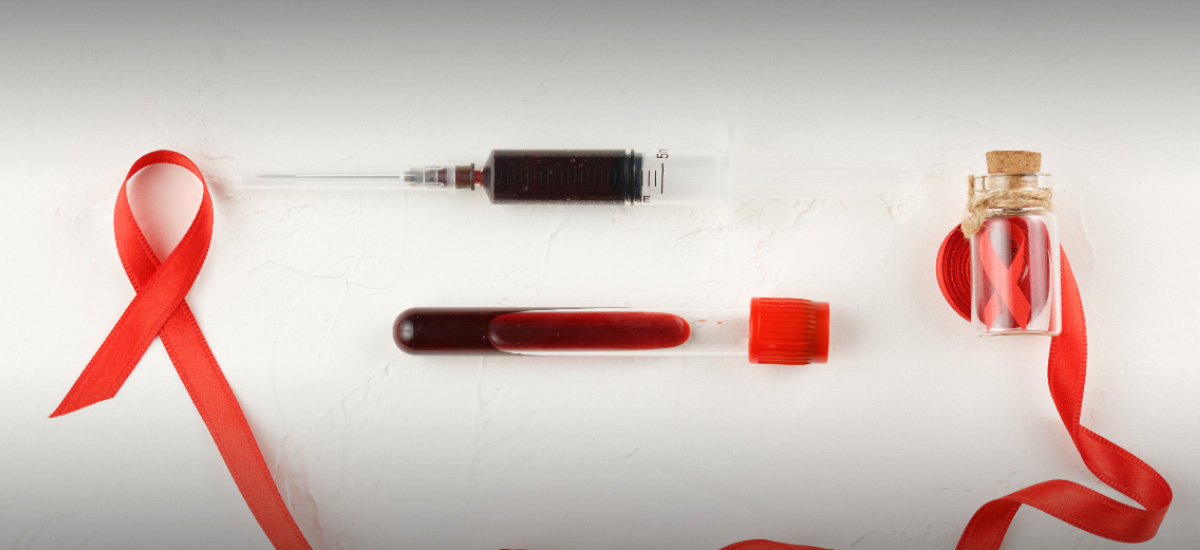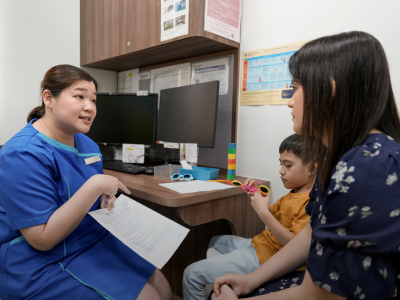Published on 18 October 2021
Compared to cancers that form solid tumours, leukaemia and lymphoma are cancers that arise from mutations in the blood cells.
Leukaemia and lymphoma are often grouped together – but they are two very different cancers. One commonality is that they are cancers related to the blood. Dr Frances Yeap, Consultant, Paediatric Haematology and Oncology, Paediatrics, Khoo Teck Puat - National University Children's Medical Institute, National University Hospital (NUH) and Consultant, Paediatric Haematology and Oncology, National University Cancer Institute, Singapore (NCIS) explained the distinction between the two.
Leukaemia is a cancer of the blood-forming tissues found in bone marrow cells. This happens when the bone marrow produces abnormal numbers of immature white blood cells. This overwhelms the normal production of mature red blood cells (to carry oxygen), mature white blood cells (to fight infection) and platelets (to aid clotting). The faulty white blood cells can also escape into the blood and infiltrate other organs such as the lymph nodes, brain, testes, liver, spleen, kidneys and the skin.
Of all the cancers that affect children, leukaemia is the most common, making up 31% of all cancer incidence. Acute (rapidly developing) leukaemia – which forms 95% of all childhood leukaemia – has two forms, depending on the cell line it originates from.
Acute Lymphoblastic Leukaemia (ALL), which affects about 80% of children with leukaemia. ALL tends to occur in children aged two to eight.
Acute Myeloid Leukaemia (AML), which affects about 20% of children with leukaemia. AML risk increases with age.
Lymphoma is a cancer of the tissues in the lymphatic system (lymph nodes, spleen, thymus gland and bone marrow), which is part of the body's germ-fighting network. In lymphoma, the cells produced in this system are faulty and grow out of control. Lymphoma is broadly classified into two types, depending on which lymphatic cells are affected.
Hodgkin’s lymphoma (HL) tends to affect those aged 15 to 34 and those older than 55
Non-Hodgkin lymphoma (NHL), is more common overall and typically affects older adults
As for symptoms, these two cancers share some overlapping symptoms, such as:
Recurrent fever
Loss of energy and appetite
Pale skin
Easy bruising and bleeding
Swollen lymph nodes
Pain in the bones or joints
Swollen belly
Dr Yeap pointed out that while the symptoms of lymphoma are somewhat similar to leukaemia and may be difficult to differentiate based on symptoms alone, “The presence of lymph node enlargement is generally more significant in lymphoma especially when there is a significantly large lymph node.”
Advancements in cancer treatment
The mainstay of treatment for these cancers is chemotherapy and the current protocols achieve a good outcome – childhood ALL has and over 95% remission rate after one month of therapy and about 80% are cured with current regimes. Hodgkin’s lymphoma also has a favourable prognosis with a five-year survival rate of over 90% in stage I/II and over 80% in stage three or more. Prognosis of Non-Hodgkin’s lymphoma is dependent on the subtype and disease staging while AML tends to have poorer results with cure rates of about 60%.
Dr Yeap, who is also a Paediatric Haematology and Oncology Consultant at the NCIS, noted that the landscape of childhood cancer, especially for leukaemia and lymphoma, has changed and improved significantly in the last ten years. “With improved chemotherapeutic drugs - cellular therapy, haematopoeitic stem cell transplant (HSCT) and supportive care, we are seeing more and more patients in long time remission which would not have been possible in the not so distant past.” Advancements in cancer detection, stratifying treatments based on a better understanding of risk and more targeted treatments are helping to raise the survival rates of cancers that are more resistant to conventional treatments.
These include breakthroughs such as:
Improved techniques (e.g. RNA sequencing) and collaborations worldwide to understand genetic mutations and aberrations that predispose an individual to cancer and may also entail a poorer response to conventional treatment
Using minimal residual disease to improve sensitivity of disease detection which affects treatment decisions
Using more targeted immunotherapeutic agents that are potentially more effective, but with less side effects
Adopting more sophisticated cell selection techniques in stem cell transplant to widen the donor pool and improve engraftment and relapse-free survival
The introduction of Chimeric Antigen Receptor T-cell therapy (CART-cell) to tackle recurring and drug-resistant leukaemia and lymphoma
This last advancement, CART-cell therapy, was the saving grace for a six-year-old British boy, Oscar Saxelby-Lee. His aggressive ALL kept coming back despite a stem cell transplant and four rounds of chemotherapy. Out of treatment options, his family crowdfunded funds to fly to KTP-NUCMI to try the experimental CART-cell therapy. CAR-T equips a patient’s immune system with a Chimeric Antigen Receptor (CAR-T), ‘reprogramming’ it to kill cancer cells. Once the CAR-T had successfully killed Oscar’s cancer cells he promptly went on to receive a haploidentical (half matched) stem cell transplant from his father. Thankfully all the hard work paid off and with the tremendous sacrifices made by the family, Oscar has been cancer-free for more than two years.
Dr Yeap also shared the experience of J, a 15-year-old Singaporean boy with a form of AML who did not respond to conventional treatment or special chemotherapy drugs. In fact, he became so ill from the side effects that he was in intensive care for a month. After he stabilised, J was offered NK cell therapy which uses donor’s activated NK cells to kill cancer cells. This was then followed by a stem cell transplant. “For the first time, he achieved remission,” Dr Yeap shared, “He is now happily back in school and has been in remission for more than 18 months.”
These stories, Dr Yeap said, reflect the combination of scientific discoveries complemented by comprehensive person-centred care by a dedicated medical team. “We may not win every battle against this dreaded disease called Leukaemia, but at least there are more victories than failures.”
In consultation with Dr Frances Yeap, Consultant, Paediatric Haematology and Oncology, Paediatrics, Khoo Teck Puat-National University Children's Medical Institute, NUH and Consultant, Paediatric Haematology and Oncology, NCIS.




